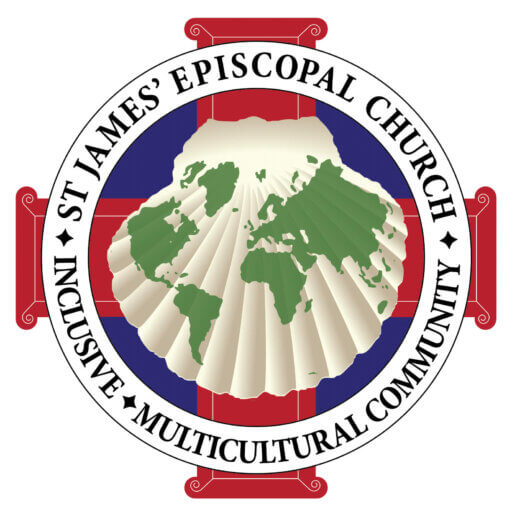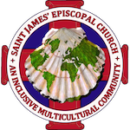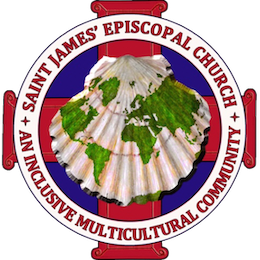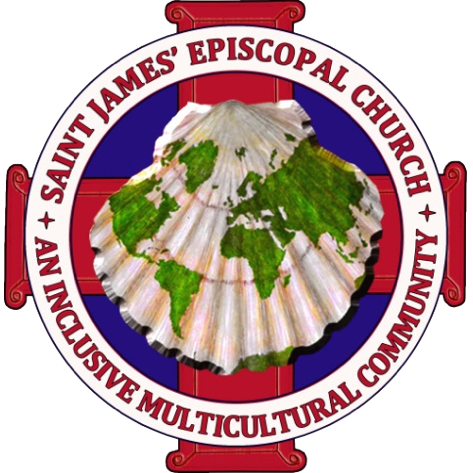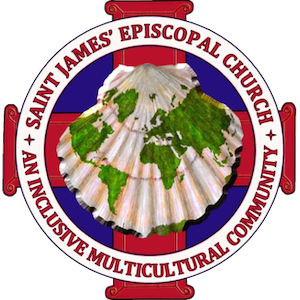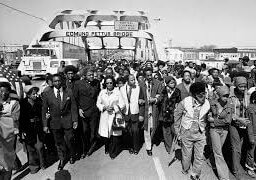A Reflection from The Rev. David Hoster
Dear People of St. James’,
Like many of us, I have watched the cellphone videos of the last minutes of George Floyd’s life. There are many other images before us today—a burning police station in Minneapolis, the Trump Twitter feed, public officials trying to justify not bringing charges—but the image we must focus on is the death of George Floyd. The image of George Floyd’s death may be important as evidence of a crime, but we must see further than the crime. The image of George Floyd’s death must be our focus not only because it is evidence, but because it is sacred.
This insight belongs to Allissa Richardson of the Annenberg School for Communication and Journalism, who says the image of George Floyd’s death, and others like it, must be treated as sacred, with “solemn reserve and careful circulation.” This image now joins the grievous company of so many others, very much including photographs of people gathered around watching the lynching of African Americans in the days of Jim Crow. These images are testimony to the sacredness of a human life being treated in the most unholy way imaginable.
Our witness to the sacredness of George Floyd’s life is essential. There must be people who will, in the words of Isaiah, both “see and perceive” George Floyd. It is his life that reveals—for those with eyes to see and hearts to perceive—the sacredness of every life within America’s awful zones of oppression, who also are treated in the most unholy ways imaginable.
Once, the zone of oppression was the plantation. Then it was the segregated zones of the deep south and the ghettoes of northern cities. Today it is the blighted area in every American city, created by white flight to the suburbs, redlining, freeway design, yielding the destruction of the economic base and, with it, the loss of jobs and decent housing, food and health deserts, and a dramatic increase in aggressive policing. These zones of oppression are the result of urban policy going back to the 1950’s that was every bit as deliberate and calculated as the creation of southern plantations in the ante-bellum south.
Americans don’t like to hear these things. Americans want a happy ending. Americans want to “do something.” Americans want to feel strong and good and effective. Yet much of what we have “done” has gone to build a protected, privileged zone for people of moderate to great wealth in the suburbs, leaving a blighted hellscape behind in the cities we abandoned. Our calls to “do something” about George Floyd, therefore, sound hollow, hypocritical, self-serving.
I’m not, of course, advocating doing nothing. Those among us who can affect public policy should. I do, however, think George Floyd asks something deeper of us than merely “doing something.”.
This moment would be a good time simply to look at the video of George Floyd’s death, in all its mute horror, the way we look at any sacred image—with humility, self-searching, silencing our striving, calming our egos. We are looking at the crucifixion when we look at George Floyd. We don’t look at the crucifixion of Jesus and ask what we should “do about it.” We look at the crucifixion of Jesus and ask ourselves how the death of this sacred person must change us.
Do we owe George Floyd any less?
So, I am called to ask, in the most searching way possible, what George Floyd’s martyrdom demands of me. What does the all-pervasive sacredness of God demand that I become? What must I be in order to be less “effective” but more holy?
Then, after opening myself to the change that holiness makes in my unholy ego, I am called to go out into the morally blighted zone where I live, engage the people whose priorities in life do not see or perceive the sacredness of George Floyd, and be who God and George Floyd need me to be.
The Rev. David Hoster
